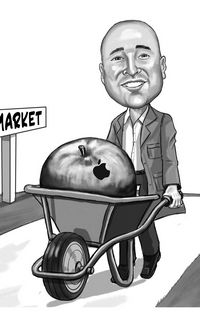Scaling the heights
Making progress in a market dominated by established frontrunners could well seem a Sisyphean task. But HSBC did just that in the euro arena in 2013, increasing its market share across product lines and showing others that competing need not be in vain. For this considerable achievement, HSBC is IFR’s Euro Bond House of the Year.
For the last few years, the upper echelons of the euro bond market have appeared something of a closed shop, with a couple of regional champions making it difficult for others to make meaningful progress.
But HSBC managed to break that stranglehold in 2013, competing across all the asset classes and adding materially to its total market share.
Adding some 150bp of league table credit to its tally – and pushing up to third in the rankings from sixth – is undoubtedly highly creditable. Doing so while maintaining global credentials as a bank that many would more naturally associate with Asia rather than Europe is all the more impressive.
“We are less branded with the euro tag than some of the incumbents in the largest jurisdictions,” said Bryan Pascoe, HSBC’s global head of DCM. “So, the extent to which we can maintain a level of performance and compete across asset classes is in itself a differentiation.”
Pascoe put this success down to three major accomplishments: consistency, innovation and growth. These are not that different from others’ aspirations, of course, but they are goals that HSBC managed to achieve throughout the year.
The consistency came from adopting an approach that did not rely on any preordained result. Instead, the bank looked at the various markets in the round and advised clients on the best solution in each case – be that euros or not.
Perhaps the best examples of HSBC’s innovation, meanwhile, came in the hybrid sector – across financials and corporates alike. The bank’s Global Capital Solutions platform allowed it to join the dots between issuers, investors, regulators and ratings agencies, leading to new transactions as well as liability management exercises.
Finally, growth was also a focus for the bank, whether building out from nascent business areas such as high-yield or consolidating positions of strength such as SSA.
“What differentiates us from others is the breadth of our business,” said Pascoe. “One thing is clear: it is not just a sausage factory.”
The financials arena was one in which HSBC was prominent throughout the year. Despite falling market volumes, the bank managed to increase its share of business in terms of league table numbers, and it led more transactions than in 2012.
Highly rated and much sought-after issuers such as Rabobank, Svenska Handelsbanken, Nordea and Allianz trusted the bank with their largest deals across the senior and covered bond sectors, while in the latter space, inaugural euro issues for Belfius, Caffil, UniCredit Bank Austria and CIBC were also notable.
But it was in the capital space that HSBC was most visible, particularly in the insurance sector, where it barely missed a beat. Having been at the forefront of Asian retail-targeted US dollar Reg S issuance – a sector in which it would be expected to fare well – HSBC also helped pioneer the move into the resurgent European institutional market with deals for the likes of AXA, Aviva and Intesa Sanpaolo Vita.
Its work for Achmea gave perhaps the best illustration of HSBC’s superlative performance this year. It was on the insurer’s first capital deal since 2006, alongside a tender offer, and was then present on Achmea’s return to the senior market a few months later.
Even so, high-profile banks were not ignored, as transactions for Swedbank, DNB and Danske demonstrated.
In the corporate hybrid sector, a leading role in EDF’s record-breaking multi-tranche offering was augmented by involvement in Hutchison Whampoa’s debut, as well as that of Telefonica.
And, as in financials, HSBC shouldered its fair share in the more flow-orientated senior market.
In the SSA sector, it replicated its strong showing of recent years, bringing a diverse range of issuers to market with landmark deals.
One prime example of the esteem in which it is held was the role it took on the first deal from the eurozone’s permanent rescue fund, the ESM. It acted as joint lead manager and duration manager – and is in fact the only bank to have done so on the inaugural benchmarks from the ESM, EFSF and EU-EFSM.
HSBC was also active across the board for supranational issuers, agencies and sovereigns, from both core jurisdictions and the periphery – a feat that was mirrored across product lines.
As Pascoe said: “What we proved was that we had the breadth of platform to deal with evolving markets.”
To see the full digital edition of the IFR Review of the Year, please click here.
To purchase printed copies or a PDF of this report, please email gloria.balbastro@thomsonreuters.com


